A former longtime resident of Casablanca returns and observes the city's changes, traveling to Marrakech for good measure.
The great inverted cone, narrowing to a vertex, that greeted arrivals to Casablanca Airport, I could no longer find on my last November trip — but its presence surely persists in graphic memory for many. Underneath this sharp point was a transparent, circular barrier topped with grassy tufts, presumably to protect travelers from accidental impalement on the way to passport control. The golden spike nonetheless remained formidable (c’est fait pour, deliberately so, as we used to say) and every time I returned home to Casablanca, I would fix my eyes on it as I passed. I had first moved to Morocco one week after the death of King Hassan II in 1999, and this airport sculpture held its post into the reign of his son, Mohammad VI. Then it was apparently displaced sometime after I had left, in 2009.
Once settled into my friend’s home in the Oasis neighborhood, I headed to center-city. Despite all the new, upmarket neighborhoods and business centers, the downtown endures as I remember it. With poor, struggling people living amidst magnificent and largely neglected Islamic-Art Deco structures, Casablanca is a “lonely place” in the rich sense Pico Iyer used to describe Havana, Bhutan, and North Korea. New additions include bright trams humming along the main boulevards, Mohammad V, Hassan II, and Abdelmoumen, as well as Tifinagh, the geometric script in which Tamazight (formerly called the Berber language) is written, embossed in gold onto government buildings — the fruit of an organized struggle to make Tamazight equal to Arabic as an official language, and voted into the constitution in 2011.
I walked from downtown to my old home in the Boulevard Gandhi neighborhood. Many of the small villas from the French Mandate period, as well as newer constructions, had been torn down and replaced by three-story buildings and businesses. The overgrown white, mustard-yellow, salmon, and pink-colored bougainvillea I had planted along the garden wall years ago now blooms high and over onto the street — a tell-tale sign, this miraculous majnouna, of houses abandoned, just as in Lebanon, by people chased away by war, disinheritance, and other misfortunes.
I postponed entering the garden until the following day, when I was accompanied by my friend Yakout. By her perspicacity and kindness, she was my eyes during this visit, as I averted my own to most details surrounding me. Walking around my former small house and garden, once sweet and elegant, I was saddened by its abandoned condition. As a result of the humidity, the plaster had fallen from the ceiling in large patches, and a caretaker had covered the Tadelakt (a traditional, natural plaster of Marrakech made with lime, savon noir, and egg whites) around the fireplace with contact paper of a beige and grey pattern. And ouf, that peculiar shade of light green I had chosen for the stairwell was portentous, I thought idly, but I could not read this sign at the time. “Look, this must be from one of Milo’s toys,” Yakout remarked, pointing to two animal figures near the back door. Parts of my son’s puzzle I remembered well, I slipped both giraffe and eagle into my purse — it bewitches me that these puzzle pieces are in perfect condition — and briefly looked around for the stones in the garden painted by the children who had lived there before us.
Yakout later took me on her habitual beach walk, and I was relieved to see that it still offers a vast, open public space, with children playing boisterous soccer, the Atlantic waves and the marabout Sidi Abdelrahman in the distance. A warm downpour soaked us on our way back to the car. We visited a couple of our favorite places, eating hearty harira soup on the ramparts of La Sqala restaurant. After that, there were mundane errands to do in the neighborhood: stopping at an extended motorcycle street cart selling some of the best fish in Casablanca, which the fish monger slips into pink plastic bags for one to carry home; visiting the improbable sliver of a keymaker’s shop between two buildings; and going to the fruit and vegetable vendor, who handed Yakout some persimmons she had left behind from her last purchase. We bought a few carrots she still needed to complete the tagine she was making over charcoal. All things are negotiable personably: where to park, where to buy, for the caretaker, a new bed in Souq Ould Mouina, followed by bedding and clothes at the second-hand market of Hay Hassani.
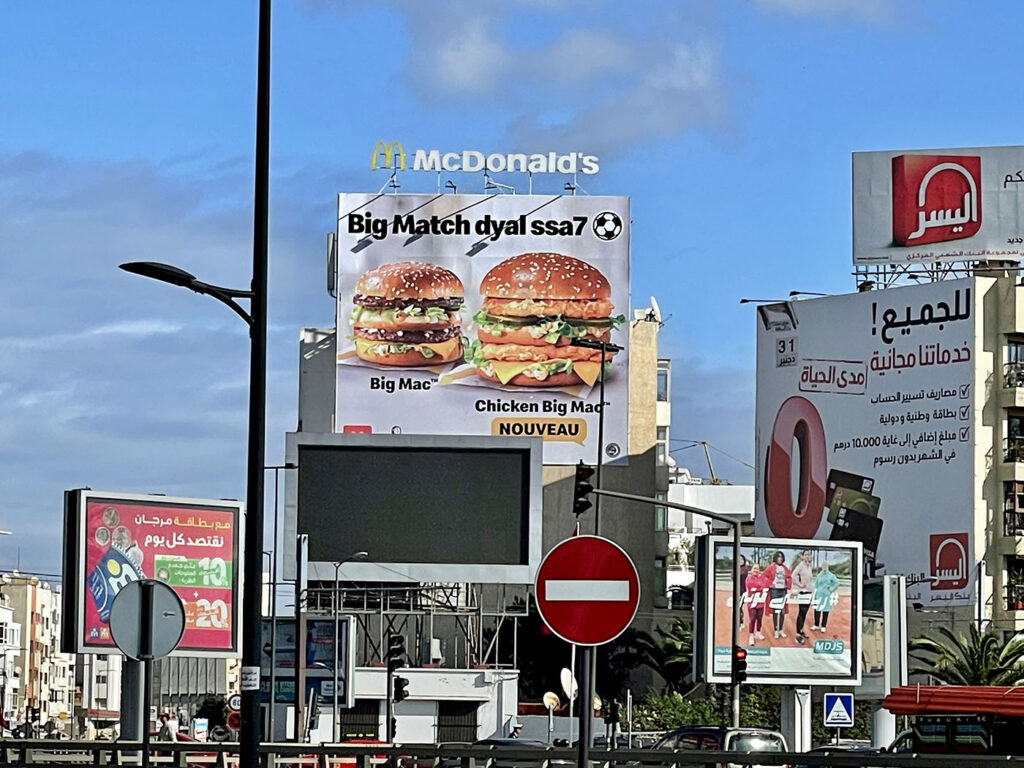
Walking through neighborhoods, my eye caught the same things that interested me in the years that I lived here: the creative ways people with little space hang laundry; the surprise of Morocco’s lush bougainvillea; the smart, amusing advertisements in Darija, the Moroccan Arabic vernacular (like the McDonald’s World Cup billboards that punned on Big Mac and “the big match, for real”). There are new street murals that seem to ground Morocco in Africa. Morocco has a strong culture, I observed anew on this trip, where people develop inventive vernaculars, wear traditional caftans and jellabas, or innovate in matters of dress, still go the public hammams, and eat mostly Moroccan cuisine. Like in India and Pakistan, roots are deep, and it is hard not to notice how much people of all generations love and respect their own regional cuisines, clothing, customs, languages, even when they like to borrow and are good at finding ways to make new things work for them. I have never met people as talented in languages as the Maghrebins. It is astonishing. Two official languages (Tamazight and Arabic), as well as useful European ones (French, Spanish, English), all taught in schools, would not be challenging. [It was Standard Moroccan Tamazight (which combines elements of Tashelhit and two other Amazigh dialects) that was made an official language. ED]
Without recognizing it, I was nonetheless apprehensive before arriving in Casablanca, and probably the whole time I was there. For one thing, I did not know what to expect after the king’s deal with Trump and Netanyahu, one part of the 2020 Abraham Accords, whereby Morocco openly “normalized” relations with Israel in exchange for US president Donald Trump’s recognition of Moroccan sovereignty over the Western Sahara. I had heard that Palestinian flags and keffiyehs are not permitted by the police, that the road from the airport is plastered with billboards celebrating the Accords with Israel, and that travel was encouraged on the new direct Royal Air Maroc flights between Casablanca and Tel Aviv. I had also heard that large numbers of Israelis travel visibly and easily throughout Morocco. I arrived at night, missing any billboard publicity, and otherwise did not come across concrete signs of Israeli presence.
But new acquaintances, particularly affluent ones, seemed uneasy when I said I was Palestinian. A few spontaneously made apologetic remarks about the king’s commitment to pressure Israel to accept a “two-state solution,” or said, “you know, the Western Sahara is important to us.” Perhaps the most brilliant campaign of the late King Hassan II, following a failed coup d’état at Skhirat, was la Marche Verte, the Green March to the Western Sahara, in 1975, by some 350,000 volunteers. The idea was to galvanize and unite Morocco, elevating its territorial claims to near-sacred status. As a result, Morocco’s rights to this territory — unvisited and unseen by most Moroccans — is today accepted unquestionably in Morocco.
More invisible still is the sand and stone wall Morocco erected to divide Moroccan-controlled territory and the Sahrawi people, who have long demanded a referendum and whose separatist movement is backed by neighboring Algeria. The wall is flanked by the longest continuous minefield in the world. The EU keeps mum about it, funding Morocco to the tune of 208 million euros over four years for the fisheries, which Morocco uses mostly in the contested Western Sahara Atlantic coast. The Israelis like to point out in their government propaganda that they are hardly the only ones erecting high military walls, and that Morocco built a much longer wall (2,777 kilometers long, whereas Israel’s is 700 kilometers). Of course, this Israeli propaganda effaces the difference in the size and density of the populations hemmed in by these walls (there are about half a million Sahrawis and five million Palestinians behind the respective walls). And yet, the Israeli rhetoric argues, Israel is accused of human rights abuses because of the Israeli “separation” wall, whereas the Moroccan wall goes unremarked upon by world media, and remains mostly unknown. Of course, such walls indisputably cause human suffering. [See TMR’s WALLS issue. ED]
But most apologetic remarks from affluent Moroccans smooth over the new reality of the Moroccan-Israeli Accord, pointing out that expatriate Moroccan Jews, many of whom have immigrated to Israel, have a right to return to their country (which seems reasonable), and that “everyone” in Morocco accepted Israeli visitors right away, particularly as a source of business in an economy that depends on tourism. Accepting visits by Israeli Jews of Moroccan origin is one thing, but the notion that there is popular acceptance of normalization with Israel is another. There were normalization protests throughout the country, but there is no equivalent, the world over, to the Moroccan football team’s passionate pro-Palestinian rally during the 2022 World Cup. Aside from firing up support, across several continents, by their miraculous success, in gracefully imposing their values and practices (giving their families center stage, praying on the field), the Moroccan football team, over and again, broadcasted the Palestinian cause onto the screens of the entire world. And there was nothing anyone could do about it.
The team’s anthem to Palestine (written by them) — one of the most beautiful songs about Palestine ever written — was sung continuously, even before the World Cup, by oceans of Moroccan fans. The scale and insistence of support for the Palestinian cause, by both team and fans, is remarkable, historic even. It seems to contradict claims of wide-scale acceptance of normalization with Israel, to say the least (“we won’t forgive [what Israel did to] Gaza,” as the song lyrics go). The stadium is the last, sustained arena of civil protest and expression — and it also contains rebellion, to an extent. The power of the Moroccan team is the size of their stage and public. There is no bigger arena in which pro-Palestinian sentiments and solidarity are given voice. It is hard to overstate this fact, particularly at a time when one Arab regime after another makes “peace” with Netanyahu — who now helms the most right-wing, openly racist government in Israel’s history.
And is it a coincidence that Dutch-Moroccan designer Aziz Bekkaoui’s World Keffiyeh Day creations pranced the catwalks as well in December? Like no other, the Moroccan people, represented by their athletes and artists, continue to champion the Palestinian cause on the international stage.
Morocco is a land of many worlds. As much as anyone travels and lives there, speaking Darija or Tamazight, or both, fluently, even passing as Moroccan after years, it remains endlessly rich and surprising. This pleasure I experience on the tiniest of scales. I traveled by train to Marrakech, spent a night at one of many riyads in the medina, and was dismayed when I saw how the public space of Jamaa el-Fna had diminished. Now there is a physical structure on the square, housing food stalls, whereas before it was open-air stalls. And the halaqat (performance circles) have dwindled considerably. The artists receive little financial support from the government, so new generations are not encouraged to learn these ancient arts and practices. This lack of support dried up cultural transmission. It is not clear how, legally, the space of Jamaa El-Fna, protected by UNESCO, can be so reduced. When I asked about this, people assured me that the structure was always there, that the open space was always this current size. But I remember too well what it used to be to give these claims any credibility. In the entire region, civic spaces are largely suspect and therefore under threat. I thought of the late Spanish writer and Marrakech resident Juan Goytisolo’s dazzling passages in Makbara describing Jamaa el-Fna’s free, rebellious practices. This artistic, carnivalesque civic space, unique in all the world, seems today largely snuffed out — even if it remains vivid in my mind through life lived richly here, and through Goytisolo’s marvelous writings.
Early the next morning, in Marrakech, I asked where I could have a breakfast of msemen or sfinge (literally “sponge,” or donuts fried in a wok-like pan), and was sent to the square of the old Mellah, or Jewish quarter. The makeshift breakfast place I found there, well-known to many in Marrakech, this anti-Argana café (the famous one in Jamaa el-Fna, bombed and rebuilt in 2011, expensive and frequented mainly by tourists), is a perfect vantage point to observe La Place du Mellah. It was nearly empty on that crisp, dry morning, with few horses and buggies or people crossing over to the other side. A young man graciously and silently offered me a seat, soon placing in front of me a glass of steaming milky coffee and a plate of sfinge. I watched people stopping by on rickety motorbikes to order a bowl of creamy rice for breakfast (for about 20 centimes). A father and his daughter, riding right up to a table on another improbably patched-together motorbike, quietly enjoyed a plate of sfinge, perhaps before he dropped her off at school. These are simple pleasures shared respectfully on shoestring budgets — ones unfathomable to most who arrive in Morocco by plane. And it was the most beautiful moment of my visit to my former life and home.



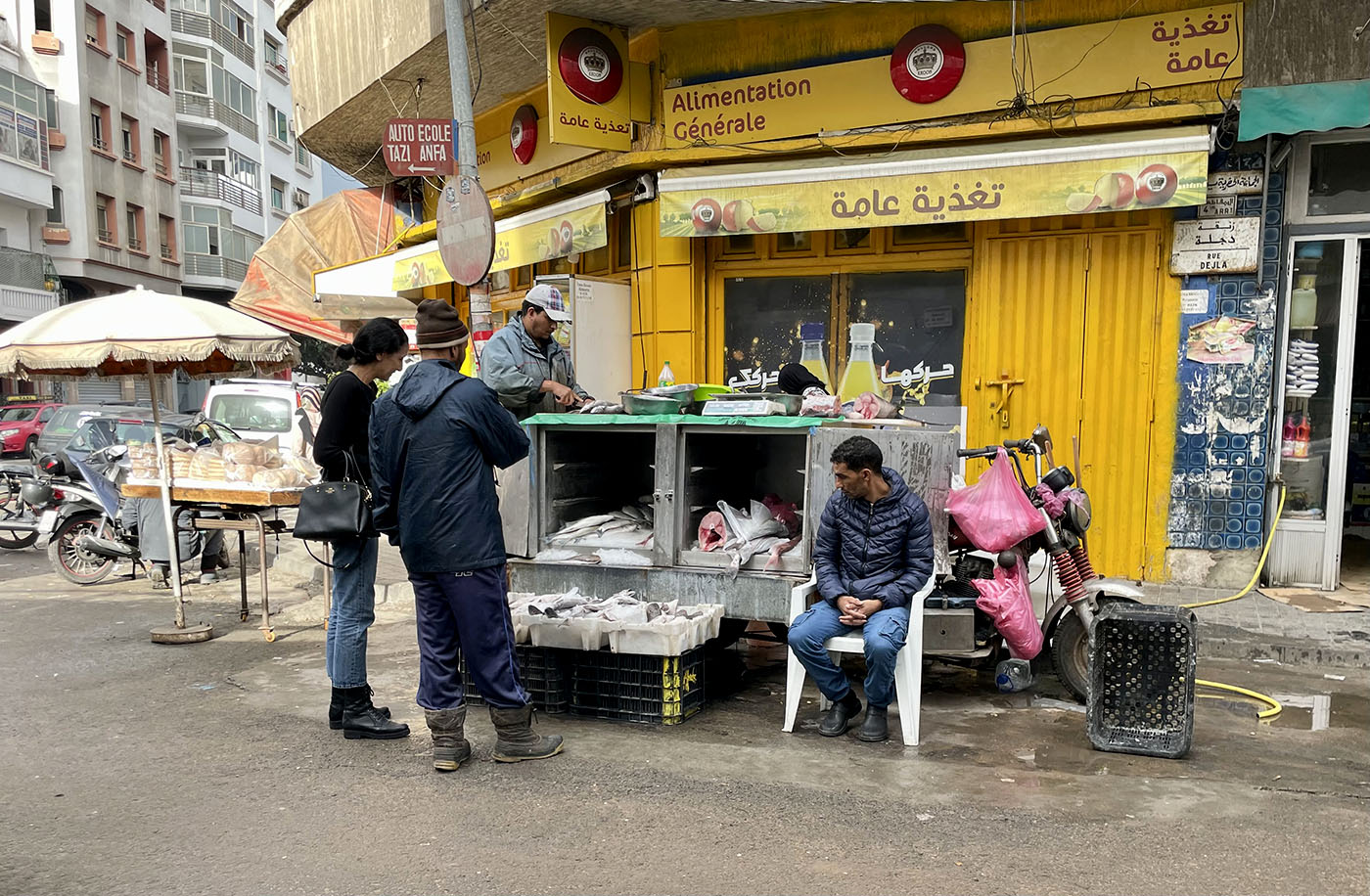
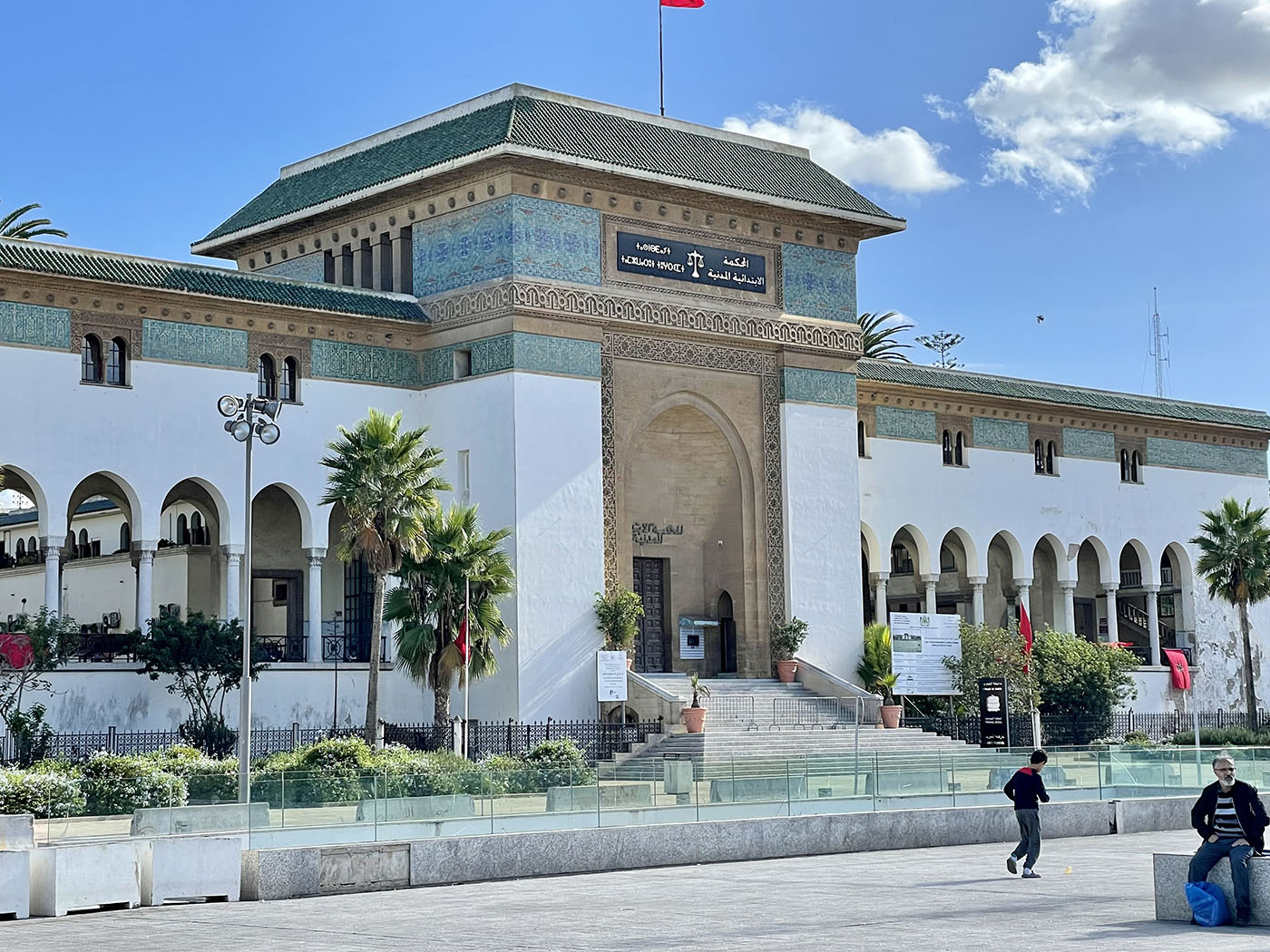
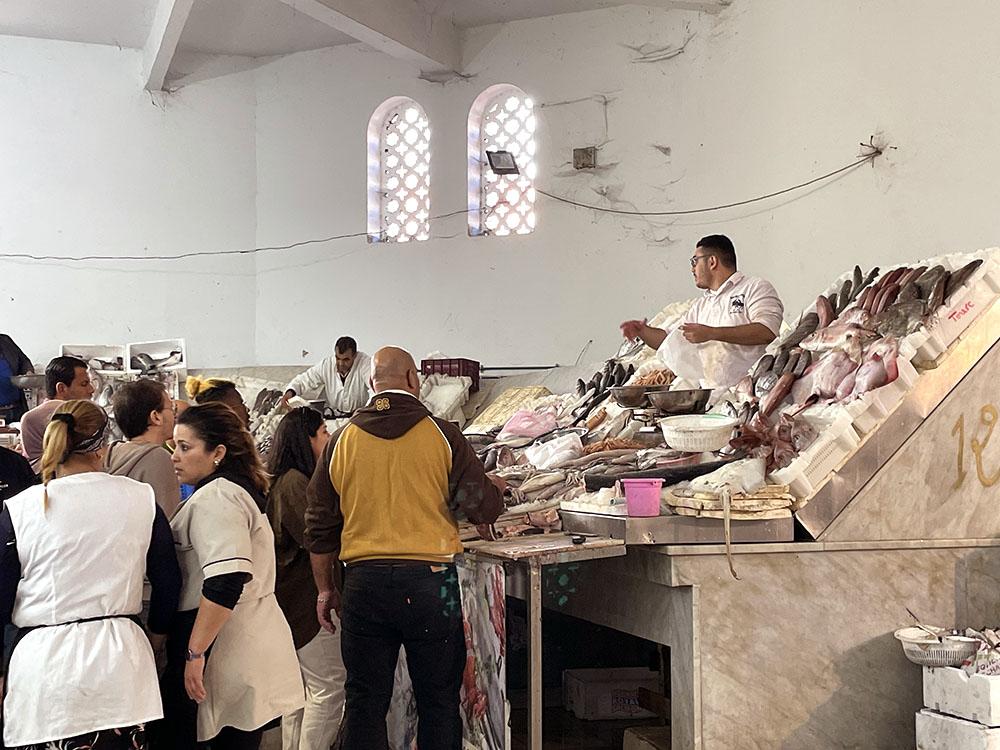
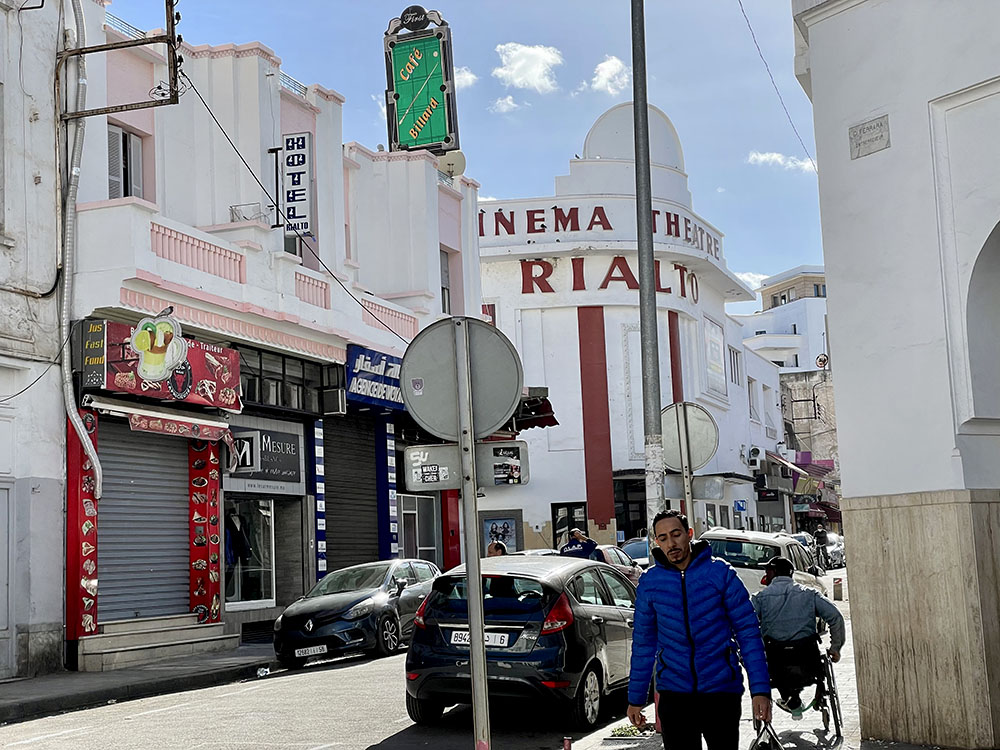
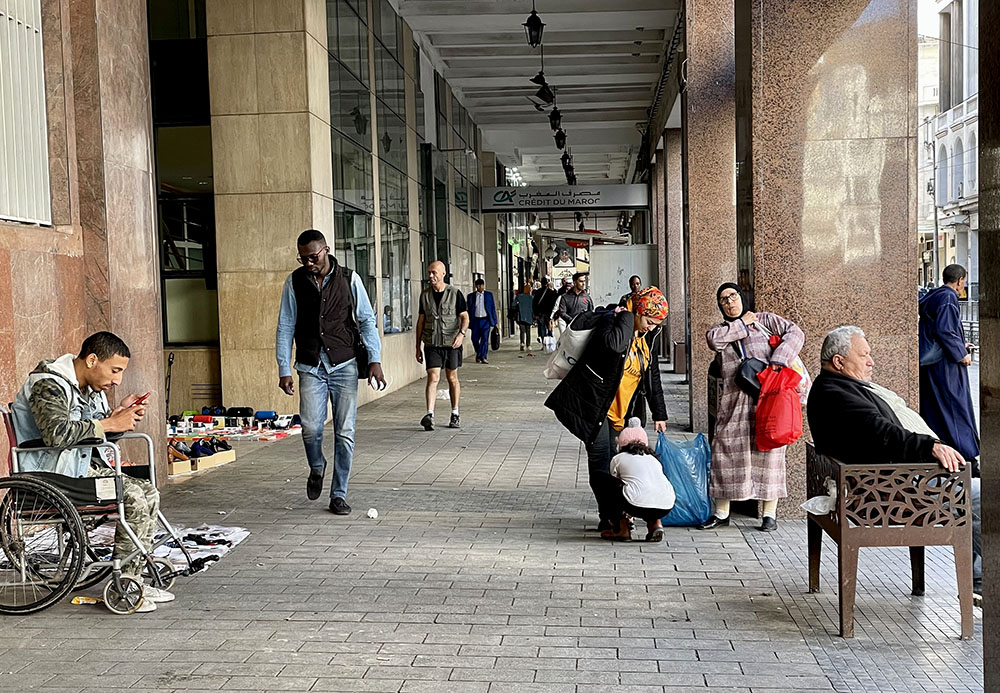
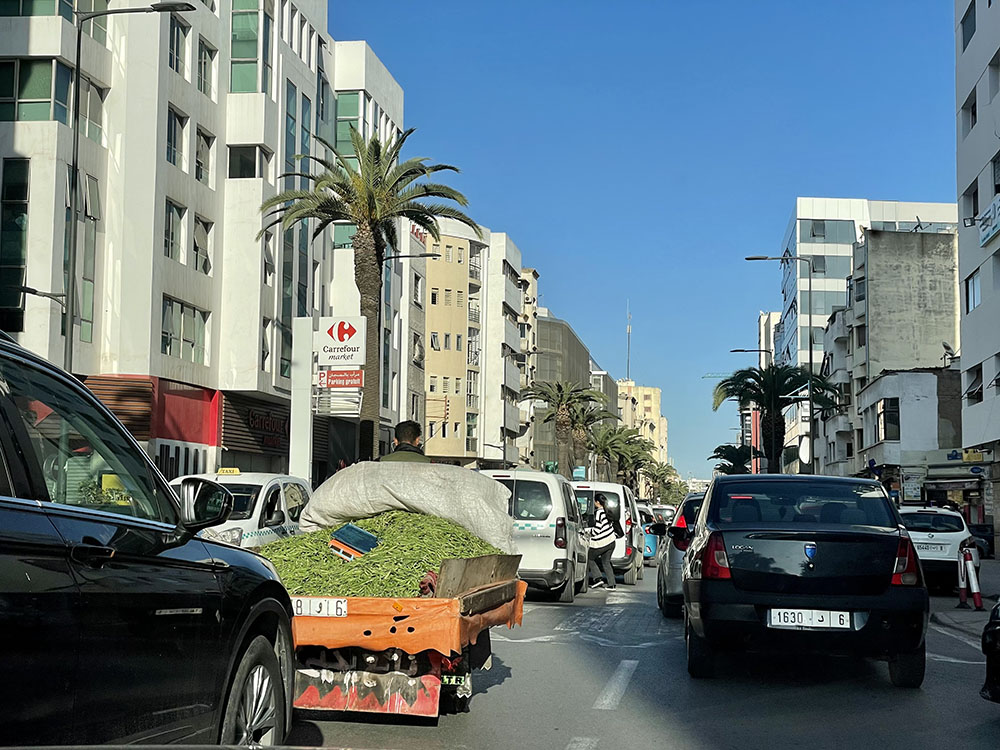
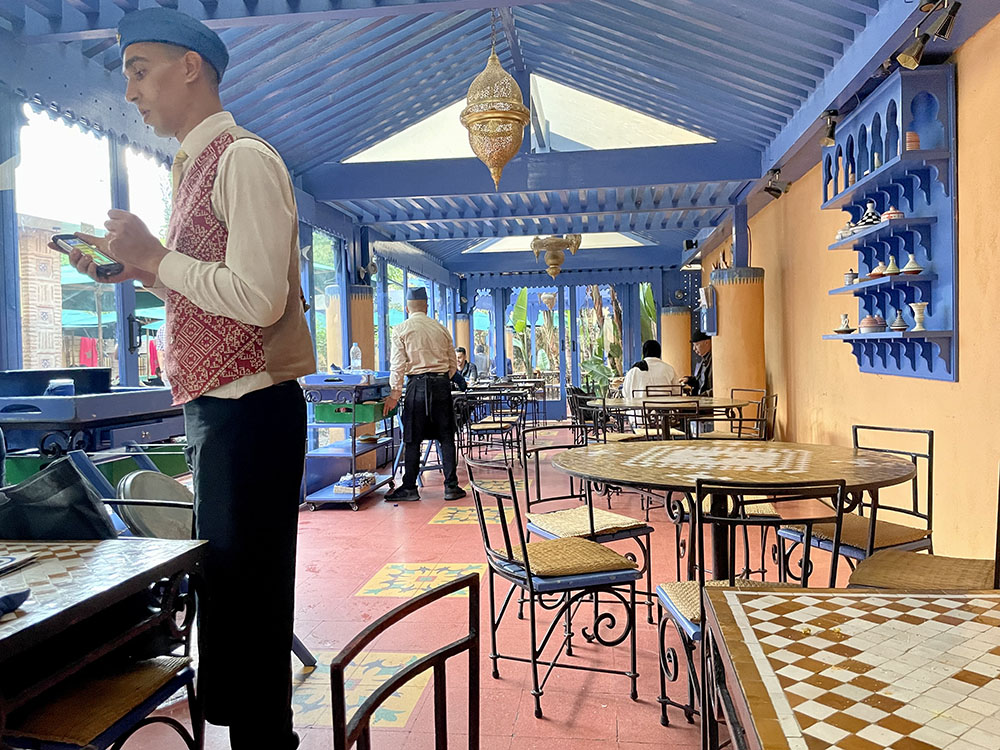
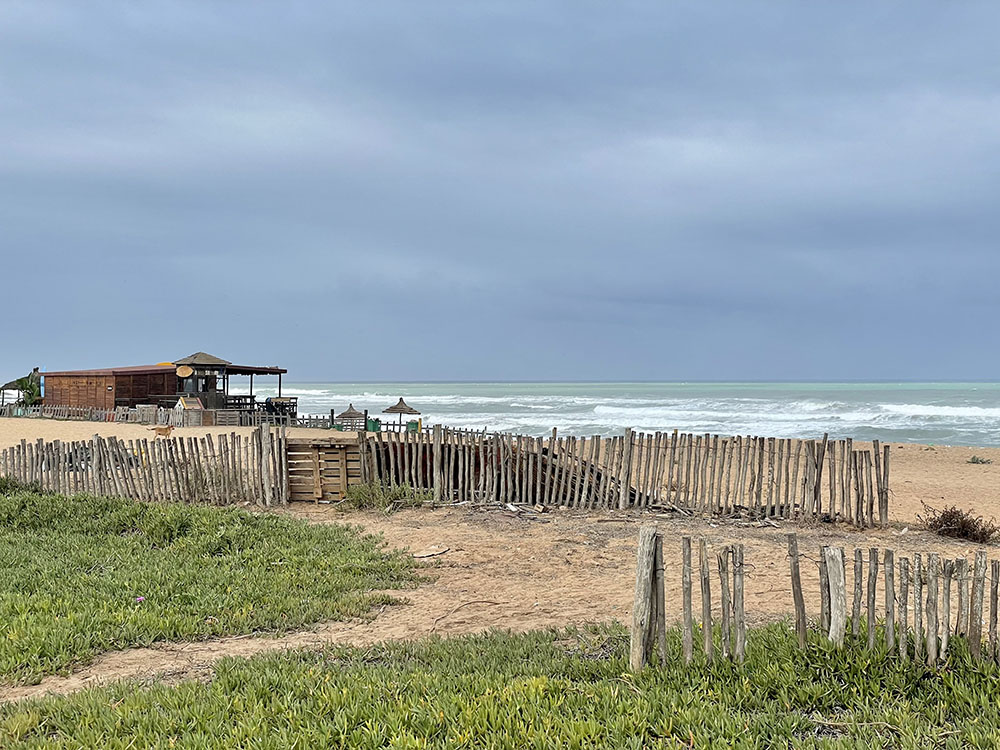
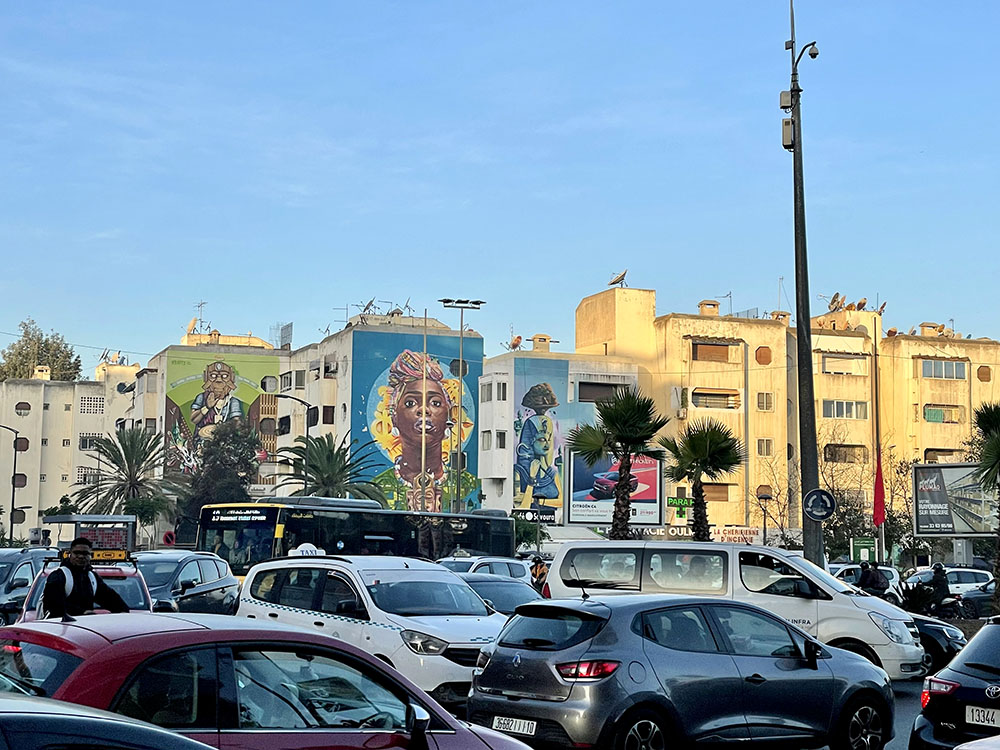
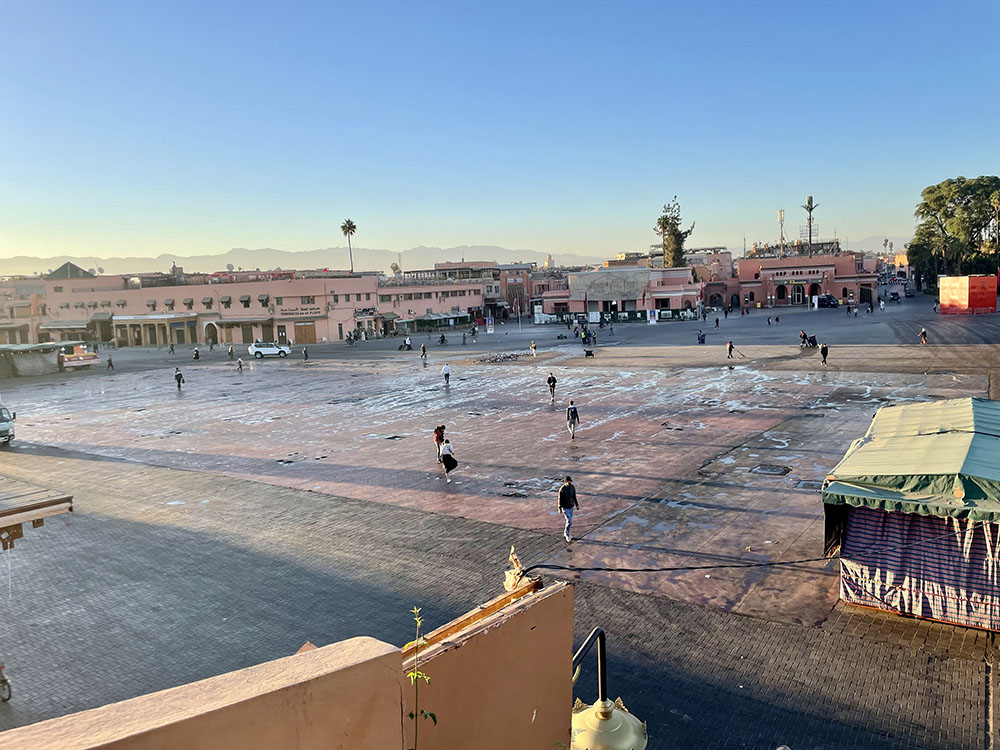
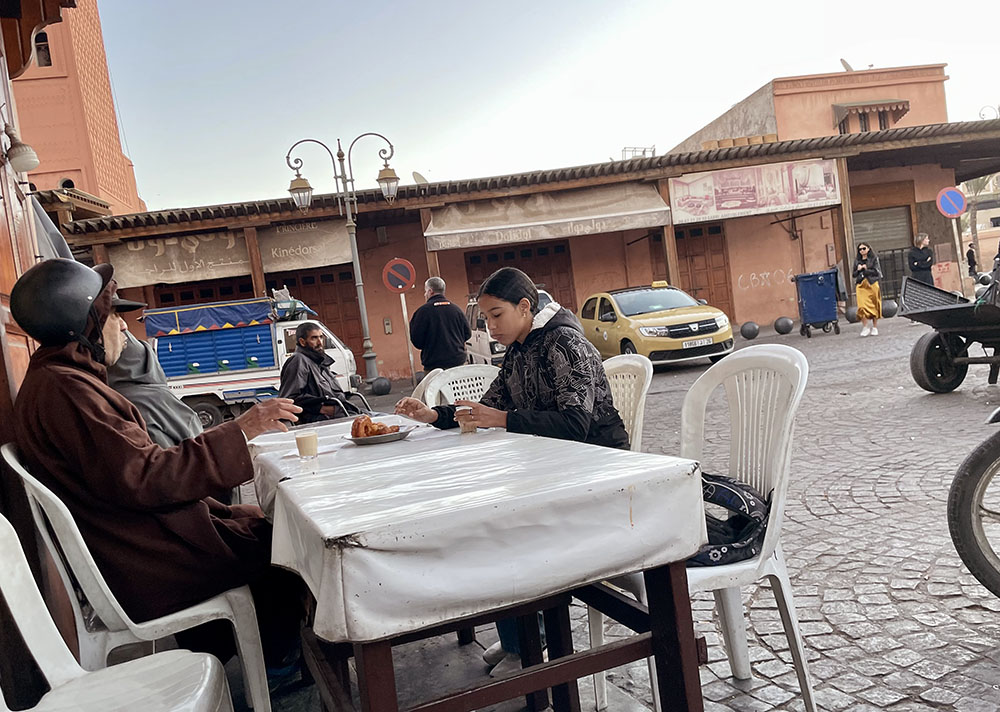
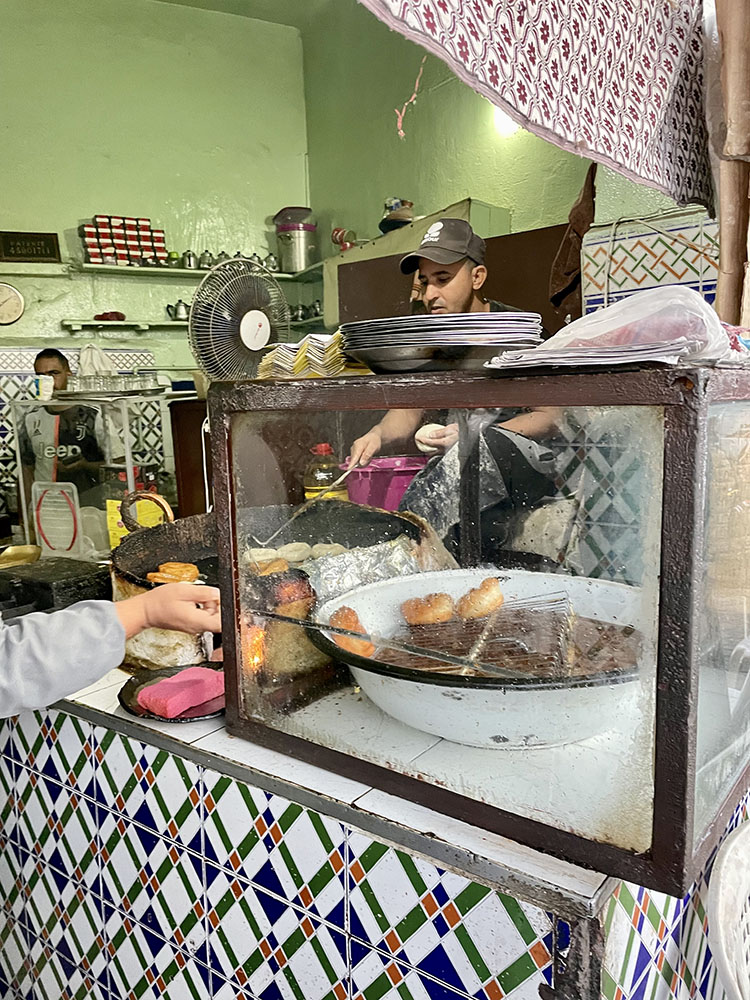
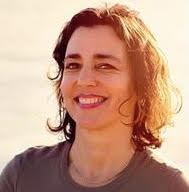
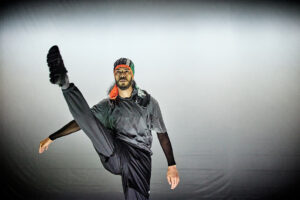
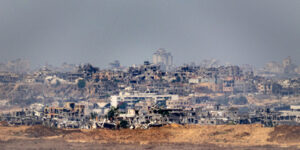
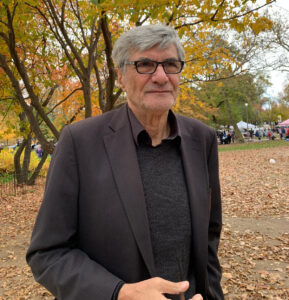
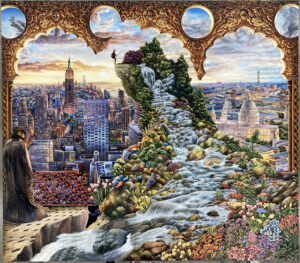


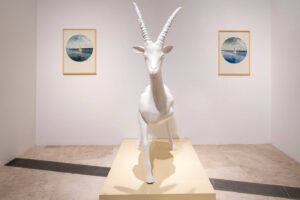
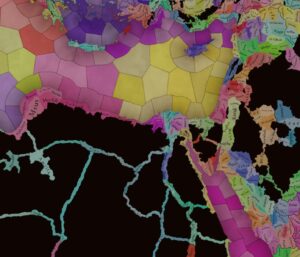
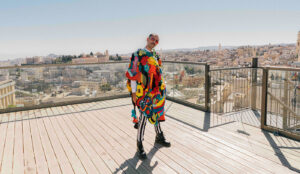

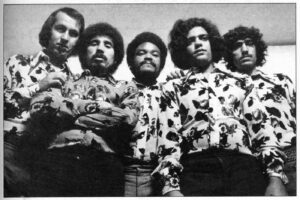
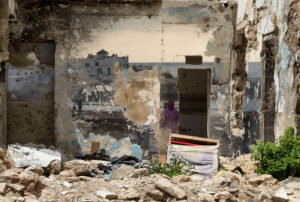
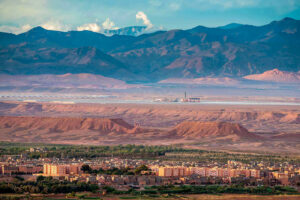
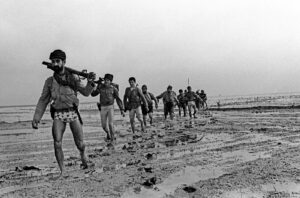
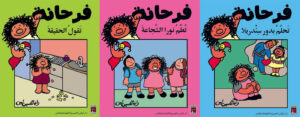
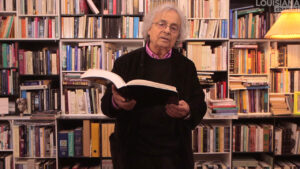
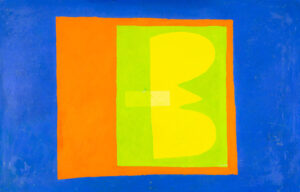
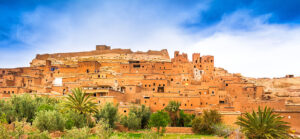
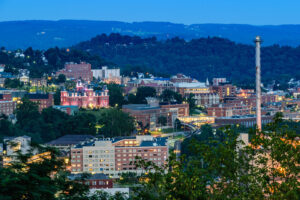
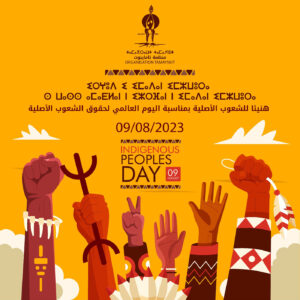
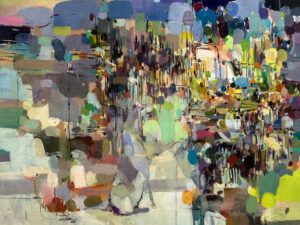
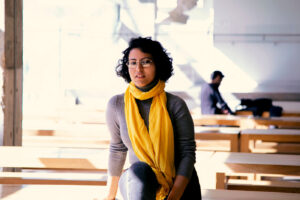
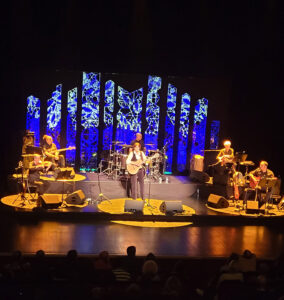
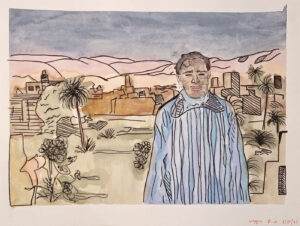
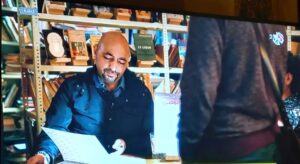

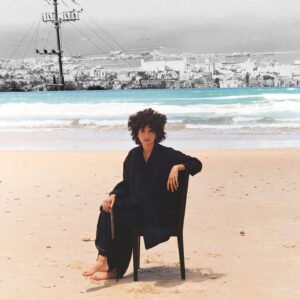
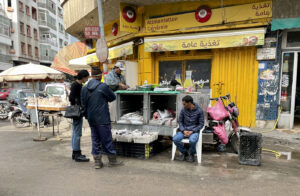
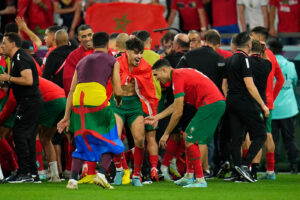
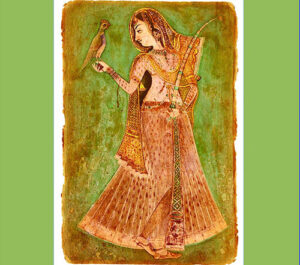

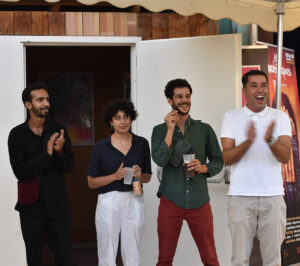
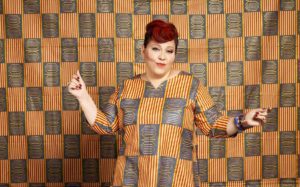




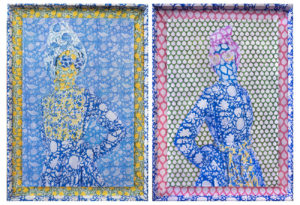
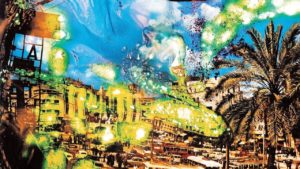

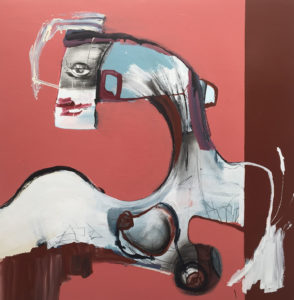
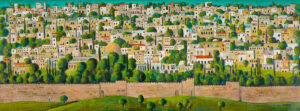

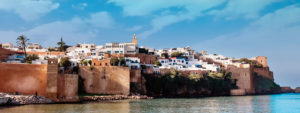



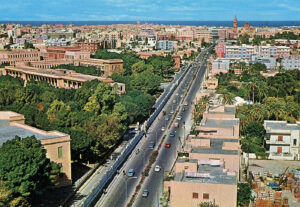

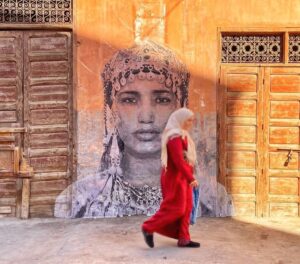

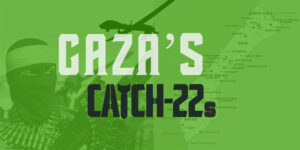


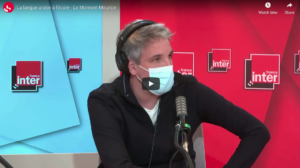
Beautiful
Jenine offered an artistic and warm glimpse of the “Maghreb” world that most of us from the eastern Arab world have never experienced. Most importantly, Jenine highlighted the dichotomy between official normalization with “Israel “ and the normalization on the popular front. The article, as expected, was eloquently written and was a joy to read.